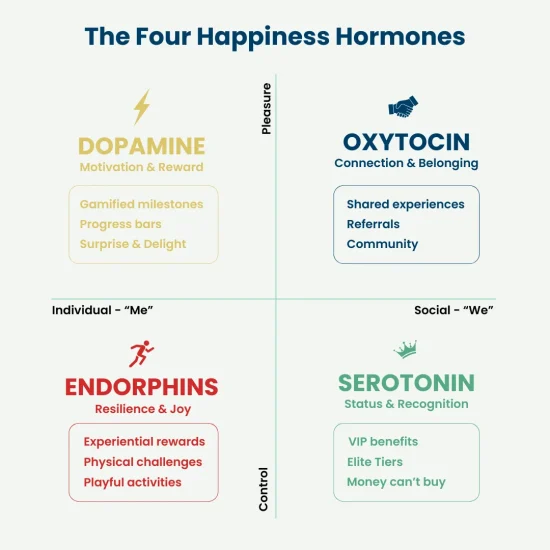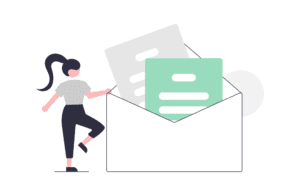When we talk about customer loyalty, the conversation often revolves around discounts, points, and perks. But neuroscience reveals that loyalty is not just transactional… it’s biochemical. Every brand interaction can trigger a DOSE of four key “happy hormones”: Dopamine, Oxytocin, Serotonin, and Endorphins (DOSE).
These chemicals influence motivation, trust, pride, and joy, which are emotions that make customers come back and stay. As highlighted in Mind My Peelings (2020), DOSE explains why everyday activities that boost mood also reinforce behaviors, from exercise to shopping. Understanding this framework gives marketers a powerful lens to design loyalty programs that truly resonate.

Dopamine: The Drive to Pursue
Dopamine is the reward and motivation chemical. It doesn’t only respond to rewards but to the anticipation of them. Neuroscientists have shown that dopamine neurons fire when we expect something positive, driving us to keep chasing progress (Schultz, 2016).
That’s why progress bars, tier milestones, and gamified challenges are so addictive. These mechanisms keep customers motivated by showing visible progress with their behaviour. In loyalty programs, endless discounts often backfire because they dull long-term excitement. Instead, intermittent surprises, mystery rewards, and achievable goals maintain the dopamine-fueled drive that keeps customers engaged.
Oxytocin: The Bond of Trust
Oxytocin is often called the bonding hormone. It’s released when we feel connection, empathy, or belonging. Research published in Nature (Kosfeld et al., 2005) demonstrated that oxytocin increases trust between strangers, being a cornerstone of social and commercial relationships.
For brands, oxytocin is the foundation of trust and advocacy. Personal touches, such as remembering a birthday, offering referral rewards, or surprising a customer with care, spark oxytocin and transform relationships from transactional to emotional. When customers feel genuinely cared for, they don’t just return; they advocate your brand.
Serotonin: The Status Signal
Serotonin is tied to recognition, pride, and social importance. Psychologists link it to the positive feelings we experience when we’re acknowledged or elevated in status (Young, 2007). In other words, it’s the chemical that makes us feel good when we’re celebrated.
In loyalty programs, elite tiers, visible badges, and early-access privileges all tap into serotonin. Even simple gestures like highlighting a customer’s milestone (“Your 10th booking!”) or thanking them for their contribution can trigger pride and satisfaction. Recognition fuels not just retention, but emotional attachment.
Endorphins: The Joy of Experience
Endorphins are the body’s natural mood boosters, released in moments of joy, play, or relief. They turn ordinary moments into memorable ones. Studies in Harvard Health Publishing note that laughter and physical activity are among the strongest endorphin triggers (Berk et al., 1989).
For loyalty, this means integrating fun, surprise, and delight into the customer journey. A playful challenge, a spontaneous gift, or a humorous brand interaction can flood customers with endorphins, creating positive memories they’ll associate with your brand long after the transaction.
Conclusion: Designing Loyalty Through DOSE
True loyalty isn’t about stacking discounts. It’s actually about sparking emotions. By applying the DOSE framework, brands can:
- Use dopamine to fuel progress and anticipation
- Harness oxytocin to build trust and belonging
- Trigger serotonin through recognition and status
- Release endorphins with joyful, memorable experiences
The science is clear: customers stay loyal not just because of what they get, but because of how a brand makes them feel. When loyalty programs align with our brain chemistry, they stop being transactional and start becoming transformational.
Subscribe to our Newsletter
Subscribe to receive our exclusive insights and events before everyone.
Start building a program that sparks joy and drives results.

Subscribe to our Newsletter
We promise we won’t flood you with emails! Every two months we will send you an insightful newsletter with marketing and loyalty news, interesting blogs and new product releases.


